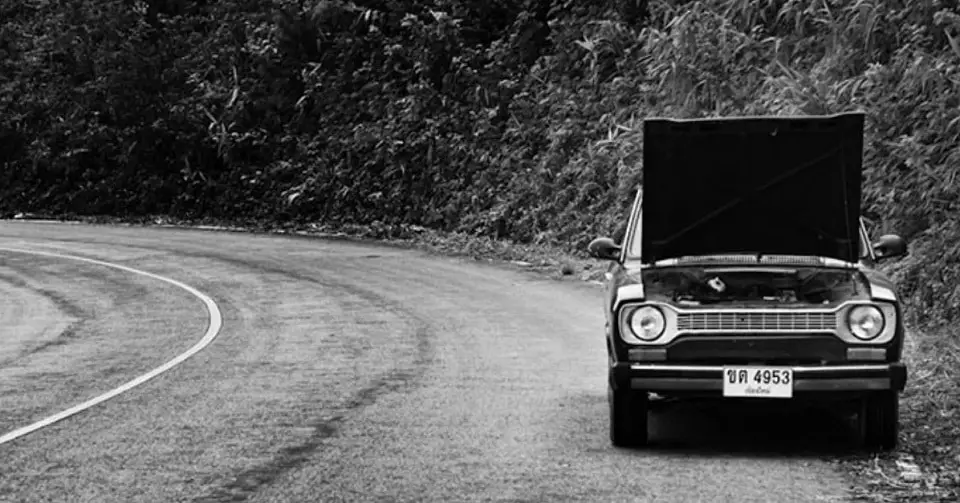Fear is a powerful emotion that can be both helpful and harmful, and it all depends on whether we choose to manage or merely respond to it. By understanding the nature of fear and its foibles, we can more effectively manage our emotions and ultimately live a more fulfilling life.
Fear can be transmuted into pleasure

This is known as "excitation transfer." When a person experiences fear, their body goes through a physiological response that includes an increase in heart rate, blood pressure, and adrenaline. If a person experiences something pleasurable immediately after experiencing fear, the body's physiological response can transfer over to the pleasurable experience, making it even more enjoyable.
For example, if a person goes on a roller coaster and experiences fear, but then immediately follows it up with a delicious meal, they may experience an even greater level of pleasure than if they had just eaten the meal. It's important to note that this phenomenon only occurs in certain individuals and in specific circumstances. It is not a guaranteed response for everyone.
Laughing at our fears help reduce their power over us

You don't have to join laughter yoga, but if you did -- it works. Even forced laughter works because it's changing our perception of and context of the situation. When we are able to laugh at our fears, we are acknowledging that they are not as powerful as they may seem.
In addition, laughter releases endorphins, which are the body's natural feel-good chemicals. Endorphins help to reduce stress and anxiety, and promote feelings of relaxation and happiness. By laughing at our fears, we are not only reducing their power over us, but we are also promoting a more positive emotional state.
Fears can be erased in sleep

Research has shown that sleep can help to erase learned fears when a person is exposed to an associated scent during sleep. This is known as "odor cue conditioning". During odor cue conditioning, a person is exposed to a scent while they are learning to associate it with a fear. Later, while they are sleeping, the scent is reintroduced, which helps to consolidate the memory and reduce the fear response.
This type of conditioning has been shown to be effective in reducing the fear of specific objects or situations, such as spiders or public speaking. However, it is important to note that this type of treatment may not work for everyone and should only be done under the guidance of a qualified healthcare professional.
Fear distorts reality

Fear distorts our perception of reality compared to a neutral observer. For example, a person who has claustrophobia may perceive a small space as being even smaller than it actually is, while a person who is afraid of heights may perceive a five-foot drop as being much higher than it actually is. This distortion of reality can be both frightening and frustrating, as it can make it difficult for individuals to navigate everyday situations.
Most importantly, most of our fears are absurdly irrational
There’s a mad logic to fear. From one angle, fear makes sense. It warns us of possible harm or danger; that’s why fire is scary, and also bears, heights, and creepy strangers. But fear is also madness. That’s because the things we fear most are often the least likely to happen, and we’re often not afraid of things that are the most dangerous for us.

In a study conducted at Chapman University, 1,500 adults from all walks of life unveiled their greatest fears. Those polled placed their fears into four categories: personal fears, crime, natural disasters, and fear factors.
According to the Chapman University study, our number one fear is walking alone at night. The second greatest fear is becoming the victim of identity theft. Internet safety qualifies as the third greatest fear, followed by fear of being the victim of a mass shooting.
Whereas some of our top fears are harmful enough to justify feeling afraid, not many are dangerous enough to be life-threatening. The threats that are most lethal, however, don’t appear on the list.
None of the leading causes of death is among the most-feared. Statistically, sickness and disease pose the greatest threat to our lives; heart disease and cancer are the two leading causes of death. Accidents kill significantly more people than gun violence. On average, there are 16.4 mass shootings per year in America, killing an average of 52 people in total. Motor vehicle accidents, on the other hand, kill over 30,000 people a year. Influenza is even more dangerous. Influenza and pneumonia cause over 56,000 deaths a year.
But who’s afraid of texting while driving, which increases the likelihood of being in an accident? Who’s afraid of eating too much and exercising too little (a risk factor for heart disease and diabetes)? How much fear surrounds influenza? If the logic of fear actually worked in a conventional way, a greasy hamburger would be just as scary as a serial killer seen on TV.
In the dark room of popular fears, a report by the National Safety Council sheds some light on misguided fright.
“[We] often worry about the wrong things,” the report said, “like being killed in a plane crash or struck by lightning, but in our lifetime, we’re far more likely to be killed by things we do every day – or things that we don’t even think about.”

According to the National Safety Council, we face chances of one in 358 of being assaulted with a firearm. But the likelihood of being killed through unintentional poisoning – an overdose of alcohol, for example – is one in 109, three times greater. The odds are greater for dying by legal execution than by being struck by lightning or by being bitten by a dog.
Flying makes many people nervous, and after 9-11, our fear of flying spiked. But we actually stand a one in 96,566 chance of dying in a plane crash. Back on land, and in the driver’s seat, we answer the phone while zipping down the highway and send text messages while sitting at stop signs, oblivious to our one in 112 chances of dying in a motor vehicle crash.
It’s time to match our fears with likely threats. Or, even better, it’s time to prepare for more likely threats in a more intelligent manner. Fear alone tends to freeze up decision-making ability and foster paranoia. But gaining an understanding of what should really cause fear, and then taking wise action will help us in cases of real danger.
Even though many people are afraid of natural disasters – over one-third of adults report being afraid of earthquakes, tornadoes, floods, and pandemics – relatively few people keep an emergency kit ready at home. Chapman University researcher Christopher Bader notes, “Despite a lot of fear, there is very little preparation.”
Unreasonable fear brings negative effects for society, but these effects can be avoided by choosing smart thinking over believing in myths. Dr. Bader found that his students were afraid of helping someone stranded on the side of the road, in case that person turned out to be a serial killer.

But serial killings are extremely rare, and our fears result in a less-connected and supportive society.
Most people believe that abductions and violent crimes have increased over the past 20 years, but in fact, the opposite is true; there have been fewer abductions and violent crimes. Yet fear causes people to avoid public places, such as parks. Consequently, these places are deserted, which causes them to become more dangerous.
Beyond damaging the bonds of society, fear also increases stress and anxiety, making people less healthy, more prone to illness, and less productive.
Fear makes sense when it matches a specific threat and helps us respond quickly, avoiding danger. Fears rooted in ignorance and based on overblown and imaginary scenarios result in high-voltage freak-outs, and shut out clarity and light.
 It's All Fucked Shirt $22.14 |
 |
 It's All Fucked Shirt $22.14 |

